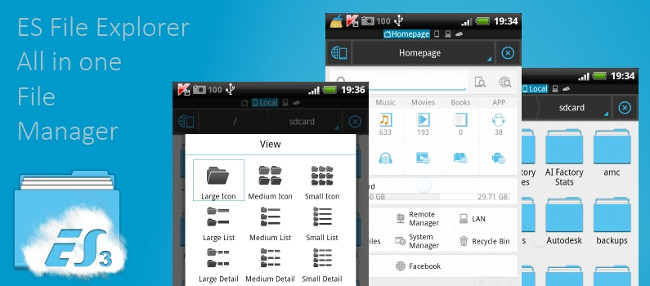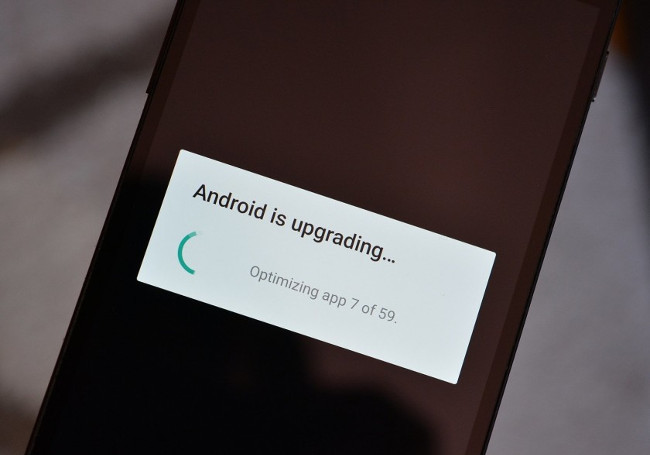Instructions on how to unroot Android devices
Rooting your phone to unlock real potential on Android devices is one of the most interesting things, but not everyone should do this because it is not a simple thing to root a device. Not to mention the root device may be harmful to your phone or tablet.
There are many people after having rooted their Android device and used it for a while, they want to return to the state as if they were not rooted. So how to root the Android device?
Refer:
- A comprehensive guide to root the Samsung Galaxy S7 or S7 Edge
- Summary of some root ways of Android devices
Unroot the device with the SuperSU tool

There are many people who use SuperSU to root their device, but in addition to the root device, SuperSU has the ability to unroot Android devices.
Download SuperSU to your device
To unroot the device with the SuperSU tool is extremely simple. Open the SuperSU application, then open the Settings tab, scroll down and select Full Unroot. Follow the instructions and wait for the application to work. After finishing, restarting the device will return to normal.
Unroot using other simple applications

There are a few other simple applications that can help you unroot your device, but those applications don't work really well for most smartphones today.
The most popular application is Universal Unroot. However, this application will not work well on Samsung phones. For LG devices, it can be unroot with this application, but then the device will return to root status thanks to LG's eFuse feature.
Download Universal Unroot to your device
Unroot using file management applications
The device root is like a complicated installation process when it installs dozens of files into the device. You just need to delete some specific files that Android phone or tablet will no longer be in root state.
To do this, you will need to own a file management application. ES File Explorer is one of the most effective file management applications .

Download ES File Explorer to your computer
To unroot the device using ES File Explorer, we do the following:
- Access the device's main driver and find the file system . Click it, then select bin . Here, delete the busybox and su files.If you can't find these two items here, then follow the next step.
- Go back to the system file and select xbin . Here, delete the busybox and su files.
- Go back to the system file and select the app .
- Delete superuser file , apk .
- Restart the device.
Unroot using OTA update

Using OTA update will break the root status of the device. However, you will have to wait until the application is completely updated.
Unroot by installing the Firmware software

Firmware is a type of software that can control the monitoring and manipulating data of the operating system. Installing device firmware will be the best way to unroot. The advantage is that this way can work well on every device. However, each type of phone has a software as well as different ways of installing Firmware. You will need to research your phone carefully before deciding to use the Firmware to unroot the device.
You should read it
- 10 Magisk Module 'must have' for your Android device
- Instructions to root Android easily and quickly
- Is root Android phone still a must-do?
- Top 15 best feature enhancement apps for Android
- Root way of Android phones 7.0 / 7.1 Nougat with KingoRoot
- Root various Android devices with Kingo Android Root
- How to check if Android device is rooted or not?
- How to install TWRP Recovery on Android (no root required)
May be interested
- Android devices will be 'stamped' trademarks
 although dominating on mobile devices, google will soon increase its presence on android devices with a certification logo.
although dominating on mobile devices, google will soon increase its presence on android devices with a certification logo. - 10 useful tips for Android users
 if you have been using android devices for a long time, you do not fully understand the features on your device. let's consult 10 useful tips below when using android devices offline.
if you have been using android devices for a long time, you do not fully understand the features on your device. let's consult 10 useful tips below when using android devices offline. - Top 5 screen sharing applications between two Android devices
 not every day, but there will be times when screens need to be shared between two android devices. for example, your mother, father, grandparents, or even friends have problems with the phone and need help from you. in those situations, the screen sharing application allows you to guide them on how to do it correctly without much trouble. here are some of the best screen sharing apps for android that you can use for free.
not every day, but there will be times when screens need to be shared between two android devices. for example, your mother, father, grandparents, or even friends have problems with the phone and need help from you. in those situations, the screen sharing application allows you to guide them on how to do it correctly without much trouble. here are some of the best screen sharing apps for android that you can use for free. - List of devices to be Android 8 - Android O of Samsung, Huawei, LG, Oppo, Sony and HTC
 android 8 or android o is the latest android version of the world's most popular operating system on the current smartphone from google developer ... the following is a list of certain devices or can be uploaded to android o during the time next time!
android 8 or android o is the latest android version of the world's most popular operating system on the current smartphone from google developer ... the following is a list of certain devices or can be uploaded to android o during the time next time! - Instructions for installing incompatible Android applications from Google Play
 android developers can restrict their application to some devices, countries and android versions. however, there are many ways to remove those limits.
android developers can restrict their application to some devices, countries and android versions. however, there are many ways to remove those limits. - Instructions for controlling Android devices via computer
 airdroid is an application dedicated to android devices. the application allows you to connect your android phone to your computer via a wireless network. instead of using a usb cable to connect an android device to a computer, you can use airdroid to move files easily and send sms messages.
airdroid is an application dedicated to android devices. the application allows you to connect your android phone to your computer via a wireless network. instead of using a usb cable to connect an android device to a computer, you can use airdroid to move files easily and send sms messages. - KitKat accounts for nearly 18% of all Android devices
 google has just released statistics of android versions being used by users around the world in june. accordingly, the latest version of kitkat is now available on nearly 18% of total android devices.
google has just released statistics of android versions being used by users around the world in june. accordingly, the latest version of kitkat is now available on nearly 18% of total android devices. - Root various Android devices with Kingo Android Root
 root is always an interesting topic for you to use android, and in this article i want to talk about a very new tool called kingo android root, called kingo for short. this is a windows-based tool, able to root for many different types of devices and the operation is quite simple.
root is always an interesting topic for you to use android, and in this article i want to talk about a very new tool called kingo android root, called kingo for short. this is a windows-based tool, able to root for many different types of devices and the operation is quite simple. - Fix common errors with Android devices
 android is the most popular operating system for smartphones today with a huge number of users. along with that many problems also arise during use, such as a stall, the application cannot open, the phone runs slower than usual ... today, we would like to summarize some errors. the most basic on this operating system and how to fix it for your reference.
android is the most popular operating system for smartphones today with a huge number of users. along with that many problems also arise during use, such as a stall, the application cannot open, the phone runs slower than usual ... today, we would like to summarize some errors. the most basic on this operating system and how to fix it for your reference. - Fix common errors on Android devices
 when using a technological device for a long time, it is difficult to avoid problems. of course, android devices are no exception. discover ways to effectively fix common android phone errors!
when using a technological device for a long time, it is difficult to avoid problems. of course, android devices are no exception. discover ways to effectively fix common android phone errors!










 How to check phone, SIM Viettel, current position supports 4G or not
How to check phone, SIM Viettel, current position supports 4G or not Instructions for using the Office Lens application to convert image files into written words on Android
Instructions for using the Office Lens application to convert image files into written words on Android Remove dead files of deleted applications to free up memory on Android
Remove dead files of deleted applications to free up memory on Android How to get a curved border display on Android phones like Samsung Galaxy S8
How to get a curved border display on Android phones like Samsung Galaxy S8 How to return to Google Now virtual assistant On Tap on Android
How to return to Google Now virtual assistant On Tap on Android Instructions on how to experience Bixby virtual assistant of Galaxy S8 on older Samsung Galaxy phones
Instructions on how to experience Bixby virtual assistant of Galaxy S8 on older Samsung Galaxy phones